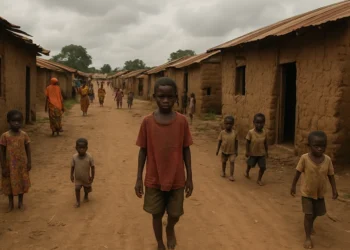Global commodity prices are on track to fall to their lowest levels of the 2020s, according to the World Bank’s latest Commodity Markets Outlook.
The twin forces of slowing economic growth and abundant oil supply are set to drive prices down by 12% in 2025 and another 5% in 2026.
In real terms, adjusted for inflation, commodity prices will likely dip below the average recorded between 2015 and 2019, officially ending a post-pandemic boom that was supercharged by Russia’s 2022 invasion of Ukraine.
According to the Bank, while the drop may help ease inflationary pressures caused by rising trade barriers, it also threatens to stall growth in two-thirds of developing economies, many of which rely heavily on commodity exports.
“We’re now seeing the highest price volatility in over 50 years. The combination of high volatility and falling prices spells trouble,” said Chief Economist at the World Bank Group, Indermit Gill.
Gill outlined three urgent steps for developing countries to weather the storm: restore fiscal discipline, improve the business environment to attract private capital, and liberalize trade where feasible.
Oil, energy, and the EV effect
The World Bank noted that energy prices, which helped stoke global inflation in 2022, have been steadily falling since 2023, and that trend is expected to accelerate.
- Brent crude oil is projected to average $64 per barrel in 2025 (down from $81 in 2024), falling further to $60 in 2026. Coal prices are also expected to plunge 27% this year and another 5% in 2026.
- Driving this is a growing mismatch between supply and demand.
- Global oil supply is expected to outstrip demand by 0.7 million barrels per day in 2025, the rapid rise of electric vehicles being a key contributor.
- According to the report, in China, now the world’s largest car market, over 40% of new vehicles sold last year were EVs or hybrids, nearly triple the share from 2021.
Food prices fall, but hunger remains
The Bank projected that food prices are to drop 7% in 2025 and 1% in 2026, but added that the fall offers little comfort in regions ravaged by conflict.
According to the UN, over 170 million people across 22 countries are expected to face acute food insecurity this year. While cheaper food commodities may ease costs for aid organizations, they won’t fix the root causes of hunger.
- Meanwhile, Gold is the outlier in this forecast as prices are expected to hit a new record in 2025 before stabilizing, as geopolitical uncertainty and investor risk aversion keep demand high.
- The yellow metal is projected to trade around 150% above its pre-pandemic five-year average.
- Industrial metals, on the other hand, are heading in the opposite direction. Weak demand, strained China property markets, and global trade tensions are expected to drag prices lower over the next two years.
The World Bank warns that the extreme price swings of the 2020s may not be a fluke. Between COVID-19, geopolitical crises, and climate shocks, the boom-bust cycle in commodity markets has become faster and more disruptive.
The average cycle, which used to last about four years, has now halved in duration.
Deputy Chief Economist at the World Bank, Ayhan Kose, added that this may be the new normal, urging developing economies to build fiscal buffers and invest in strong institutions to ride out the volatility.























